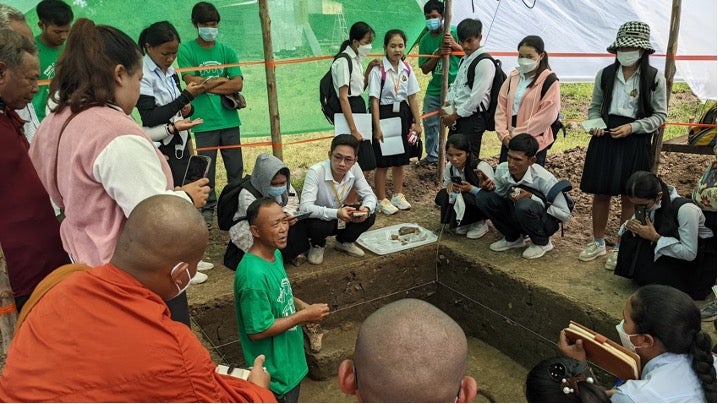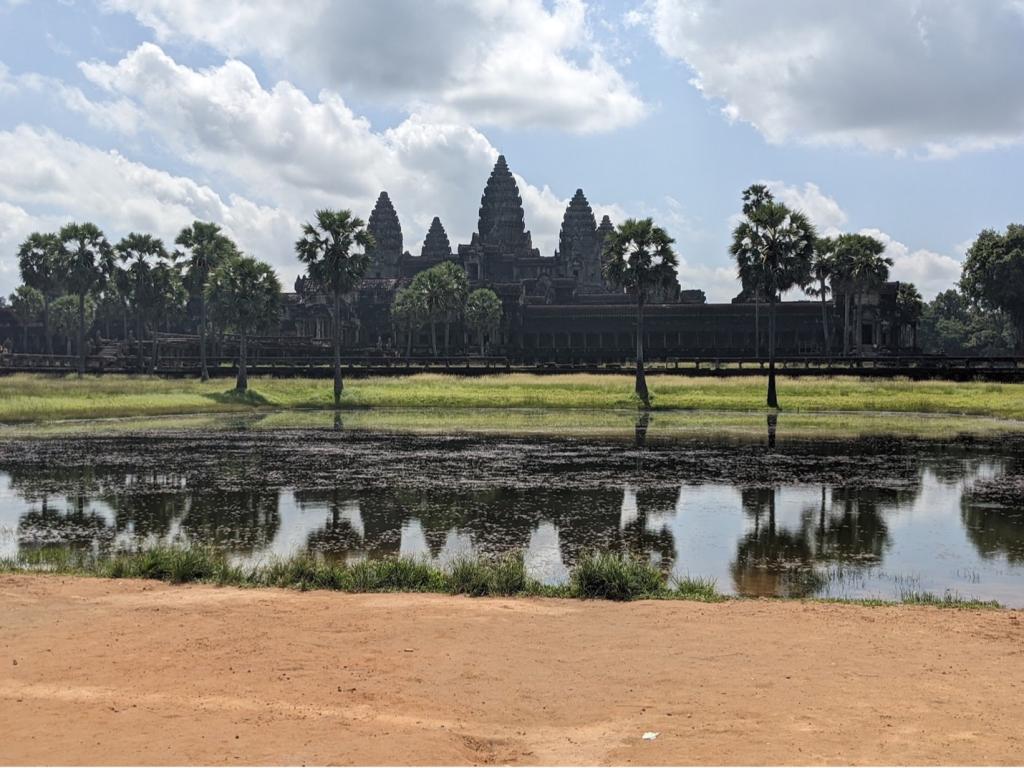
Editor's note: This story is part of The Marathons Series, a collection of articles written by faculty and students. It's a space to talk about work in progress and the process of research—think of it as the journey rather than the destination. We hope these stories help you learn something new and get in touch with your geeky side.
If you ask the average person to name an archaeological site, they might name famous locales such as the Great Pyramids of Egypt, the Roman Colosseum, Mexico’s Chichén Itzá, or the Great Wall of China. These are beautiful and awe-inspiring demonstrations of human achievement. They are also monuments created by and for ancient rulers and elites. Monuments such as these are often the focus of archaeological research, but they represent the activities of just a small portion of an ancient society.
What about the lives of the common people who made up most of the population in these ancient states? This is a question that archaeologists around the world have considered and the focus of my current research studying the Angkorian civilization in Cambodia.
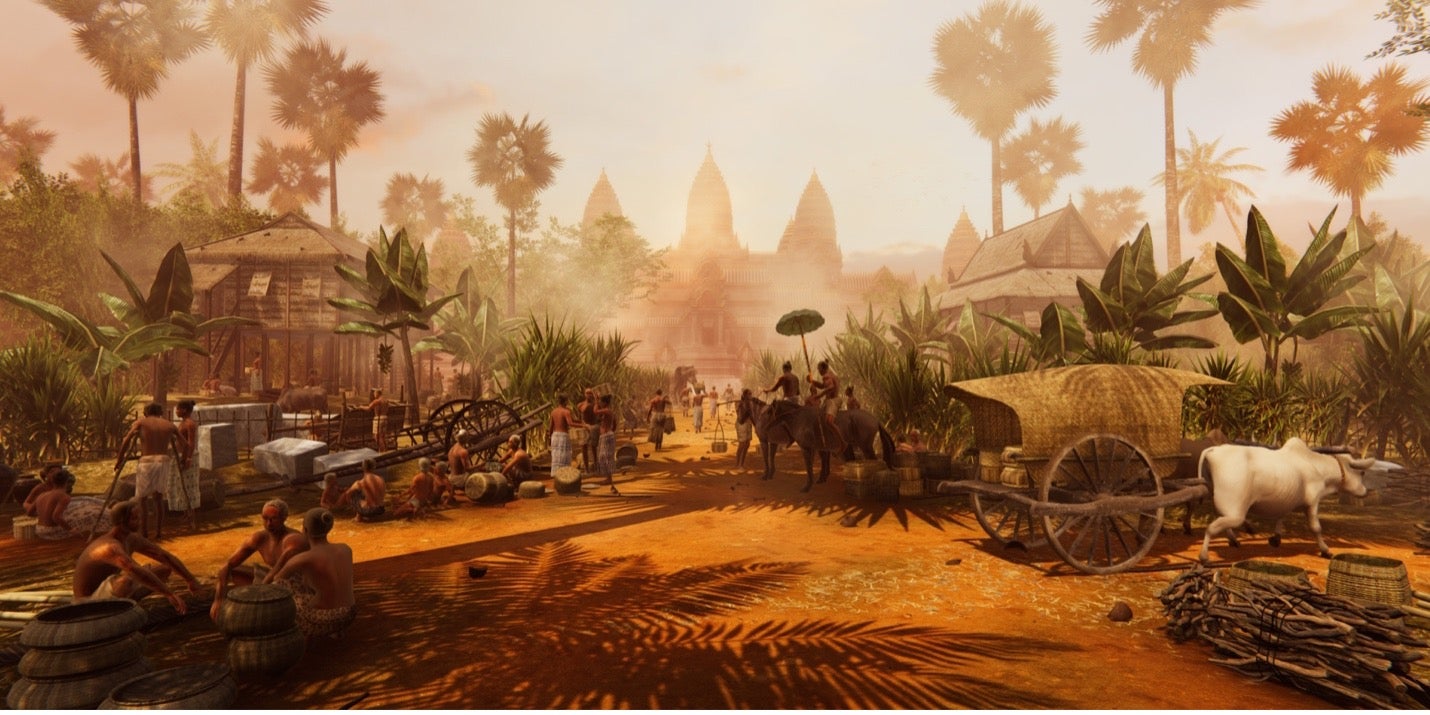
The Angkor Empire, sometimes called the Khmer Empire, was the major political power in mainland Southeast Asia from the ninth to 15th centuries. The Empire’s capital was a sprawling city, known today as Greater Angkor, located on the banks of the Tonle Sap Lake in northwest Cambodia. Angkor is most famous for its dozens of beautiful stone and brick temples, built on behalf of the rulers to honor the Buddha or different Hindu gods. The most famous of them, the temple of Angkor Wat, is on the flag of Cambodia and saw more than 2 million tourists in 2019.
However, recent work has estimated that as many as 700,000-900,000 people lived here at its height. To better understand Angkor’s population, I have worked with international colleagues and Cambodian archaeologists from the Ministry of Culture and Fine Arts and APSARA Authority (the government entity that oversees the Angkor Archaeological Park) to investigate where Angkor’s citizens lived both inside and outside the capital.
The non-elite members of Angkor did not leave behind written documents, and they built their houses out of organic material like wood and thatch. Ancient Angkorian houses, like those in Cambodia today, were built in posts or stilts, which means part of their living space is archaeologically invisible. For these reasons, we rely on careful excavation of the occupation mounds to find features related to dwellings, like postholes, as well as the remains of their food and material culture.
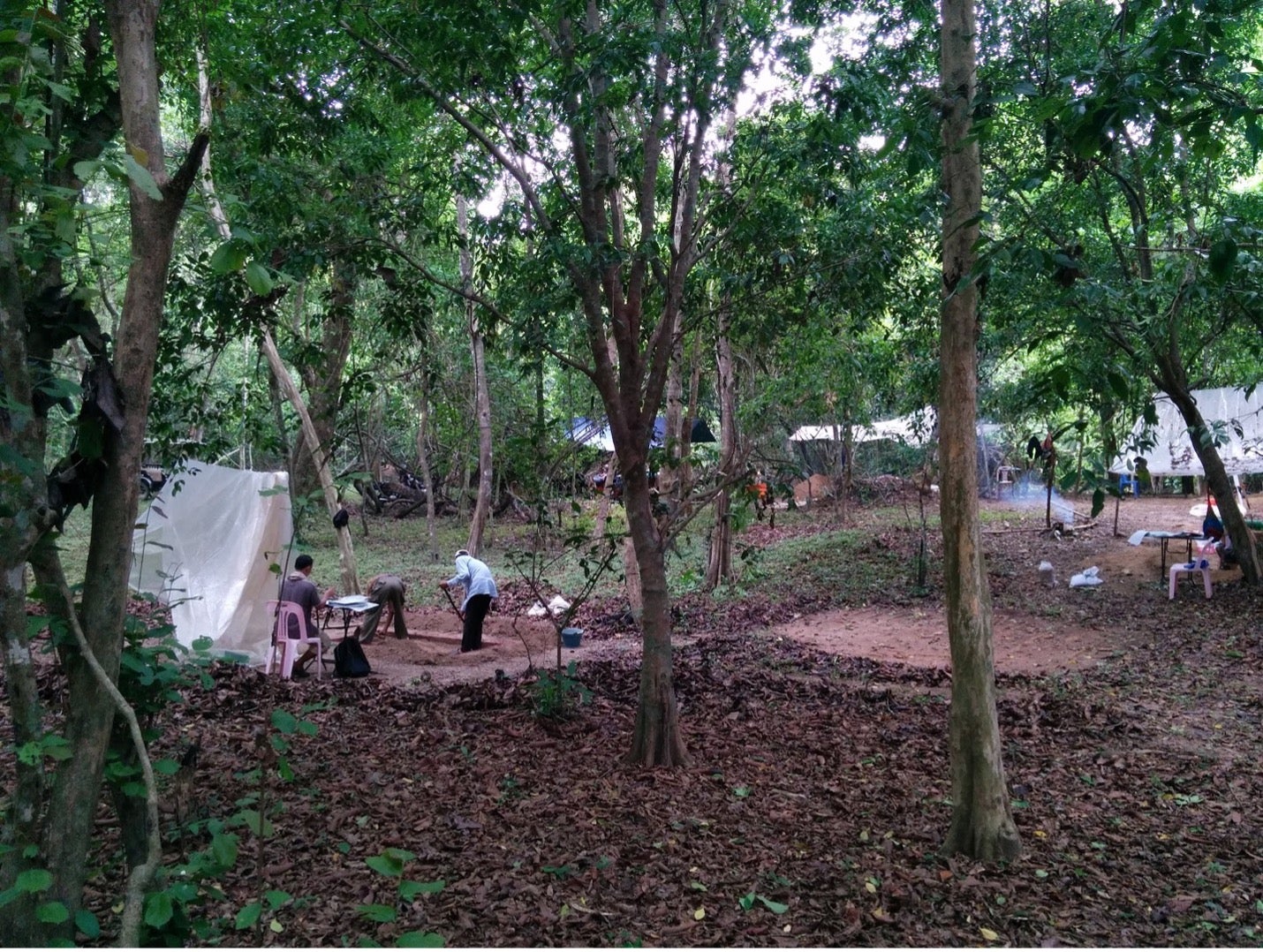
Digging Down to Find the Stuff of Everyday Living
We carefully dig in 5- to 10-centimeter layers, sometimes known as spits, and screen the dirt to look for artifacts. While digging we also keep track of features or special artifacts and document them through photographs and drawings. Our project paleobotanist, Cristina Castillo, also collects some of our excavation soil to carefully look for burnt plant remains and tell us more about what people were cooking and eating on the mounds. At occupation mounds within the Angkor capital, she has identified rice, mung beans, black pepper, and cotton, the latter of which was likely used as part of textile production.
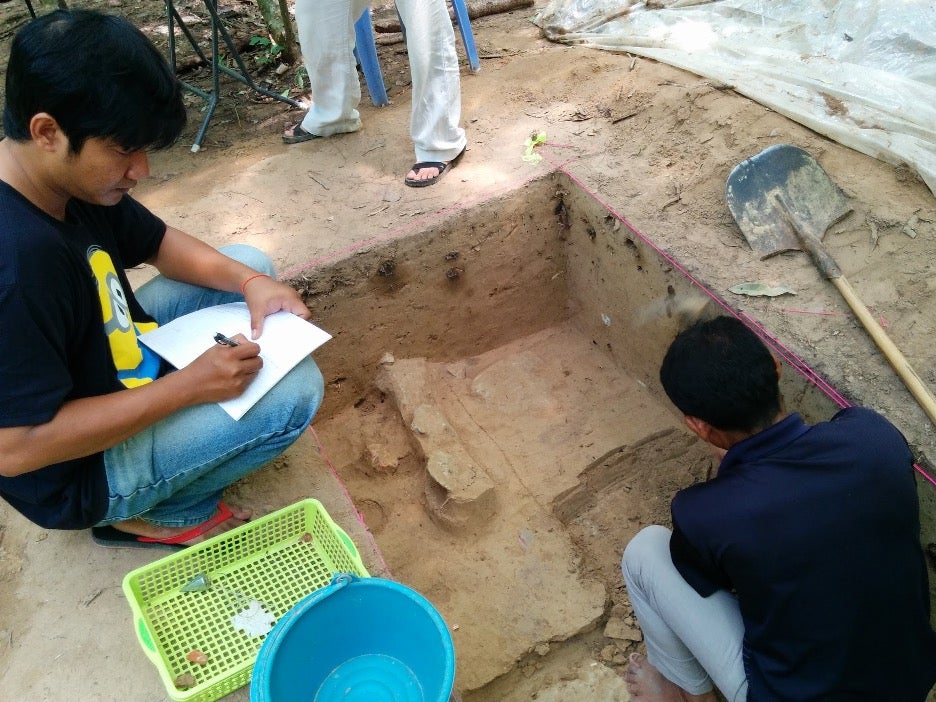
Some of the most common artifacts we find are ceramics. Most ceramics are utilitarian earthenware used for cooking and eating, or more high-fired ceramics known as stoneware that are common throughout the Angkor empire. We mostly find broken pieces of these ceramics, but at an occupation mound within the Angkor Wat temple enclosure we found a nearly complete vessel seemingly buried underneath a floor. We’re not sure what the purpose was but wonder if it might have been an offering related to the construction of a house.
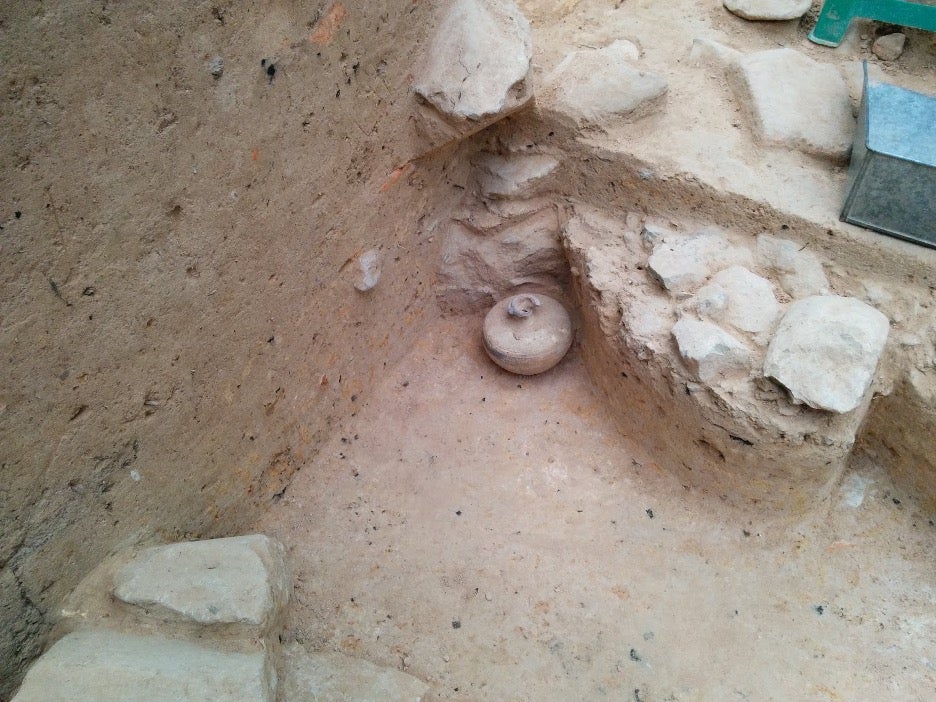
People have spent more than 100 years studying Angkor’s temples, but concentrated work on the occupation areas of Angkor’s non-elite population has only taken place for about 20 years. We are still at the beginning stages, but through careful excavation we can begin building a better understanding what life daily life was like at Angkor.
Life in the Provinces
In the late 12th century, the Angkorian king Jayavarman VII faced a problem. He had recently recaptured the Angkorian capital from the rival Cham kingdom and was on his way to becoming one of Angkor’s most powerful and successful rulers. However, shortly after taking the throne he faced a rebellion by rulers in a provincial zone to the west of the capital known as Malyang. He sent an ally to quash the rebellion and the event is memorialized on bas-reliefs on two of Jayavarman VII’s temples, which depict the decapitated heads of the rebel leaders being presented to the king.
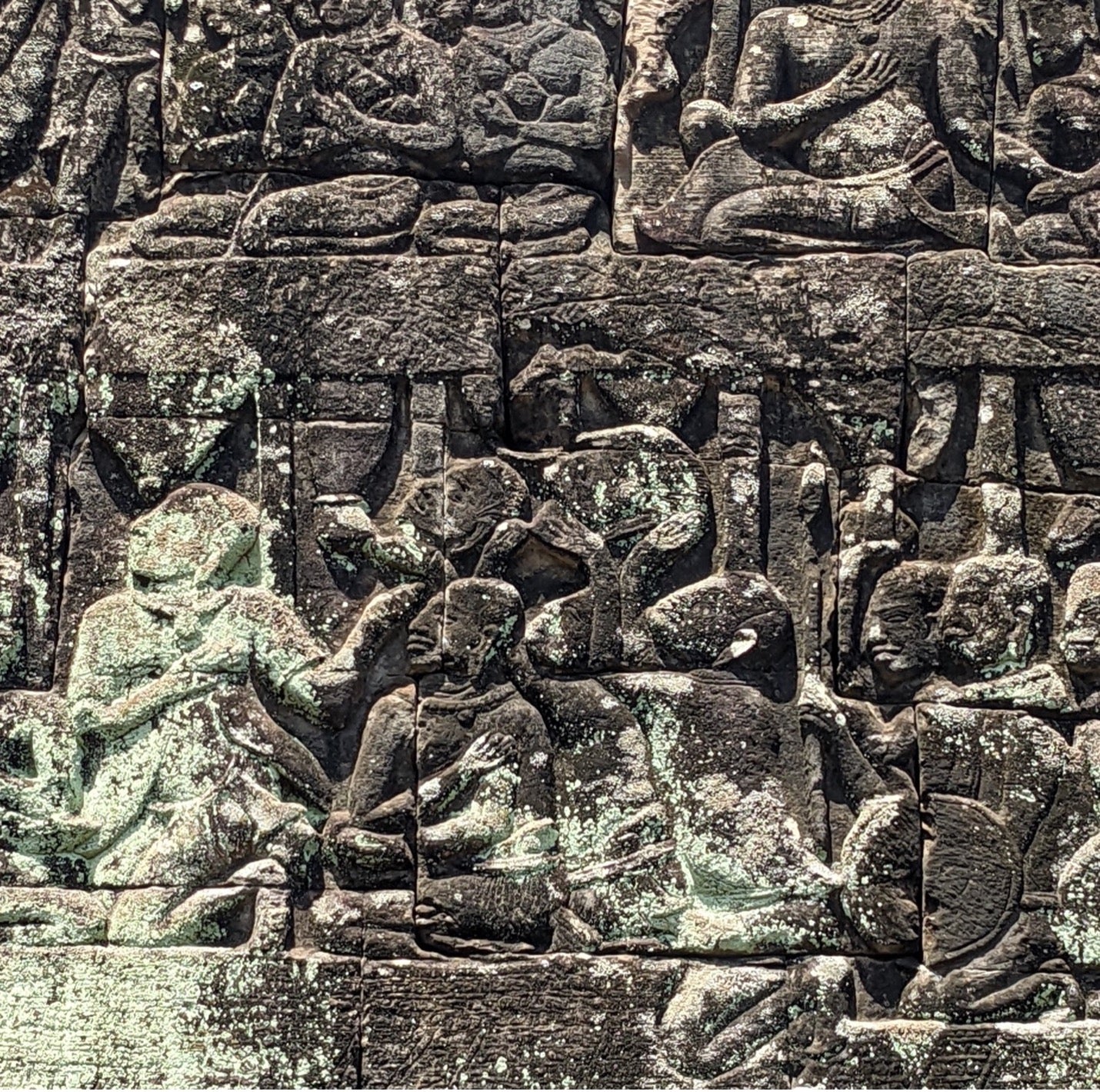
Maps of the empire depict an unbroken blob that, at its height during Jayavarman VII’s reign, spanned most of mainland Southeast Asia. However, events like the Malyang rebellion remind us that Angkor was not a monolith and that some provincial zones may not have wished to be part of Angkor.
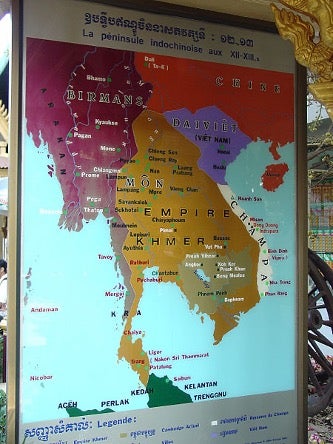
Most archaeological work in Cambodia has focused on Angkor’s capital, but Pteah Cambodia, a project I co-direct with Miriam Stark of the University of Hawai’i in collaboration with Cambodia’s Ministry of Culture and Fine Arts, asks what life was like in provincial Angkor. To address this question, we are conducting excavations in the village of Baset in Battambang province, just across the Tonle Sap Lake from Angkor’s capital. Baset is home to a small sandstone temple (Prasat Baset) built in the early 11th century by the Angkorian King Suryavarman I. However, archaeological investigations suggest that people lived in this village for hundreds of years before the temple was built and continued to live there after the decline of Angkor in the 15th century.
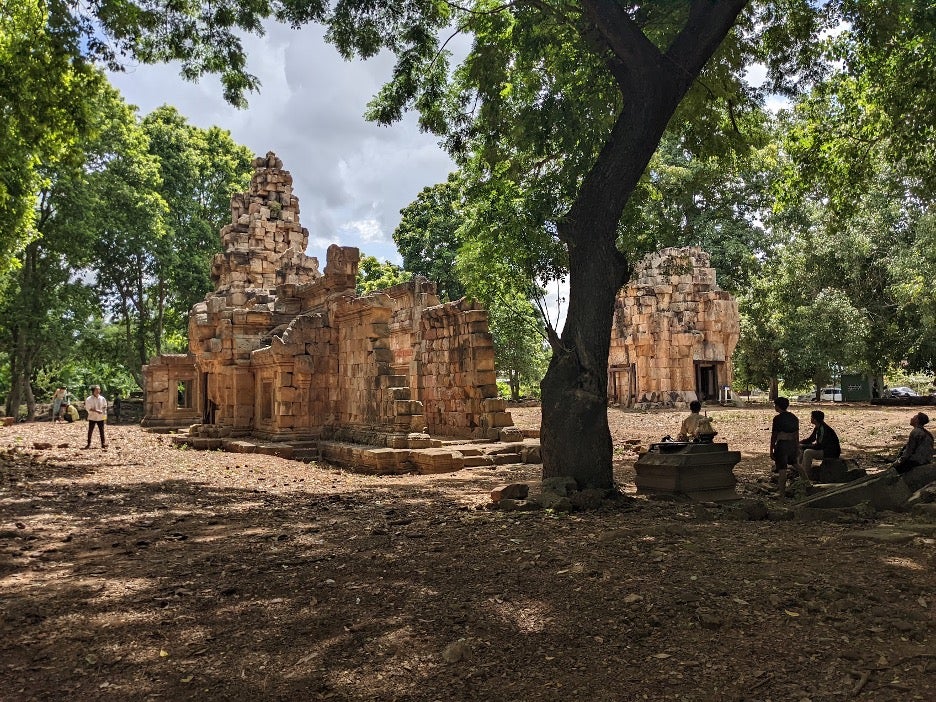
Did life in this village change after the temple was built? For example, did more people from the capital move to the village or did people from the village move to the capital? Did tax and tribute demands from Angkor change the economy and subsistence of the people living here? To answer these questions, we are excavating occupation mounds in the village surrounding the temple to gather information on the lives of the inhabitants from the periods before, during, and after the construction of the temple. We began work in 2018 and 2019 and recently re-started work in summer 2022. Although our research is only in its early stages, the rich archaeological record at this site is helping us understand many facets of life.
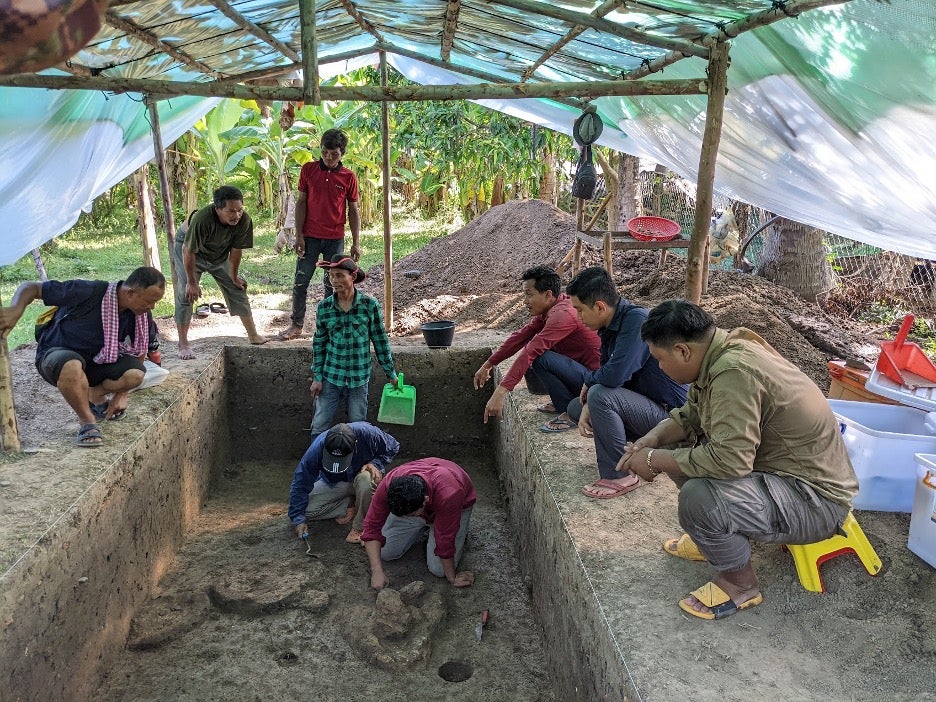
For example, while we expect that most inhabitants of the village were agriculturally focused, there also seems to have a thriving textile production industry. One mound where we worked had more than two dozen ceramic spindle whorls, used in the spinning of material like cotton or silk for weaving into cloth. Cloth would have been used for everyday clothing, with finer pieces being used by elites or for the gods in temples. Cloth also may have been used to fulfill tax and tribute demands from the capital.

The More Things Change, the More They Stay the Same
We also found small clay balls that were likely used as pellets for slingshots to hunt small birds or animals. Such pellets are still used by people in Cambodia today and we even saw people making them in the village while we were conducting our excavations. In another mound we found a small fishing net weight and copper-based metal fishhook. Animal bones from a variety of domesticated and wild animals are common in our trenches and are currently awaiting more comprehensive study.
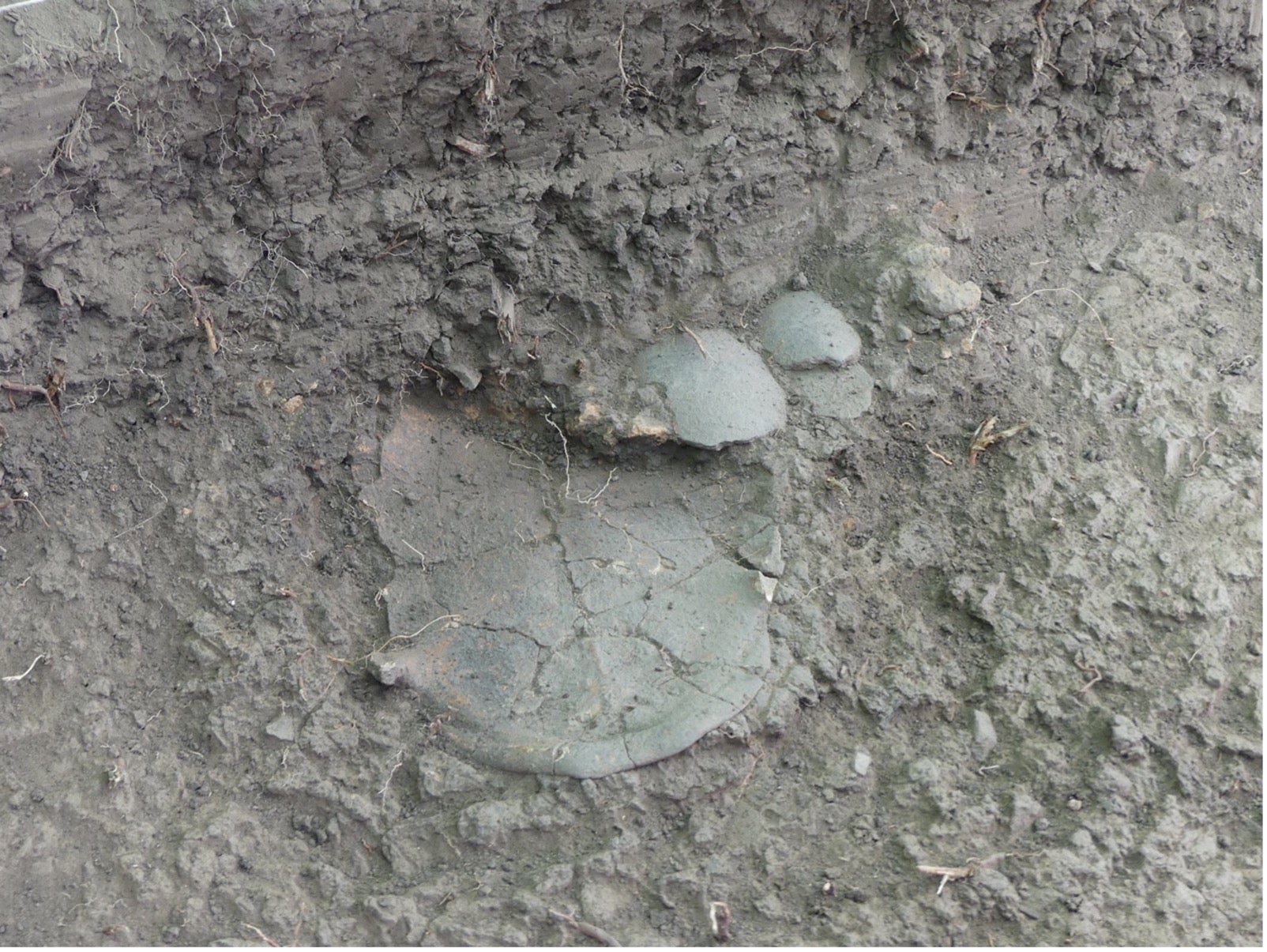
Our work investigating the ancient lives of people in Baset takes place within the community of Baset’s current residents. We hire several people in the village to help us with our project and hold an event every year to share the results of our work with people in the village. As part of our current project, we plan to make a comic book that explains our research to disseminate to children and their families in the village. In this way, we hope to make our research on the everyday lives of Baset village relevant to the people living on this important archaeological site today.
